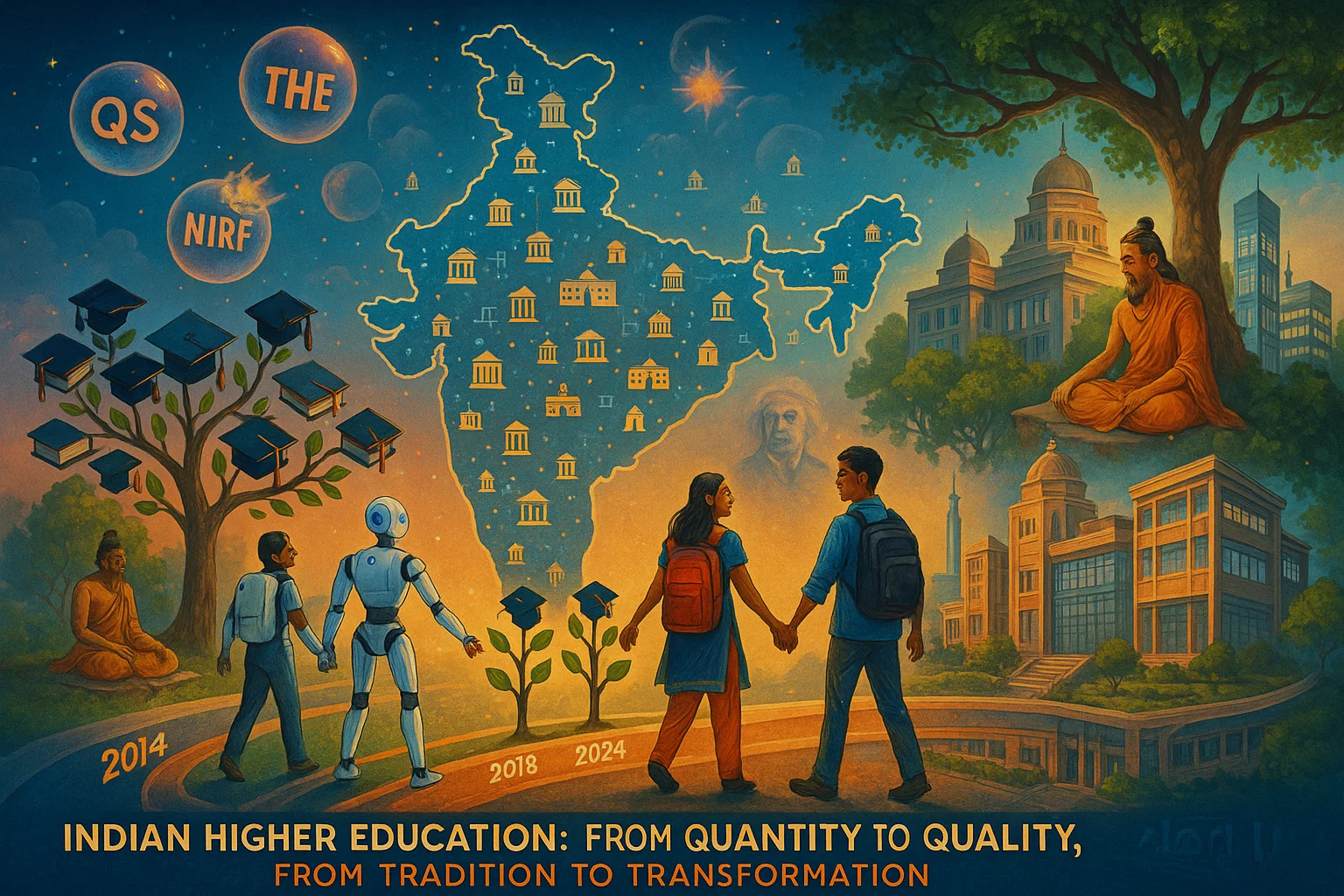Indian Higher Education System : From Quantity to Quality
Updated on: 28 April, 2025

Indian higher education landscape is very complex and is changing very rapidly. If we study the AISHE report and as per the view of industry leaders such as Maheswar Pari, Indian higher education is witness greatest transition. As per the AISHE data since the academic year 2014-15, 341 universities and university-level institutes have been established, bringing the total number of registered universities to 1168. Out of these, 685 institutions are managed by the government (240 by the central government and 445 by state governments), while 10 are privately run but receive government aid, and 473 are privately owned but not government funded.
It is worth noting that there are now 17 universities exclusively for women, up from 11 in the academic year 2014-15. Furthermore, as of the academic year 2021-22, there are 18 Open Universities, including 1 Central University, 16 State Universities, and 1 State Private University. Of the 1,162 universities reviewed, 655 were classified as General, 192 as Technical, 57 as Agriculture and Allied, 79 as Medical, 27 as Law, 19 as Sanskrit, and 8 as Language Universities. The remaining 125 universities are divided into numerous specialty groupings. The number of registered colleges increased significantly in the 2021-22 academic year, reaching 45,473 from 38,498 in 2014-15. In addition, 1,677 new colleges were formed for the school year 2021–2022. Out of the colleges that responded, 21.5% are classified as Government Colleges, 13.2% as Private (Aided), and 65.3% as Private (Unaided). I've tracked the evolution of university rankings and their impact on higher education.
Rankings have been developed as standardised assessments on an international scale to provide students with a means of comparison, a tool for evaluating university performance, and a reference point for funding decisions. However, they frequently face criticism for emphasising research output over instructional excellence. Following the University of Zurich's recent decision to withdraw from the Times Higher Education (THE) rating, there has been fresh discussion over the effectiveness and influence of such rankings. The University of Zurich, ranked eighty-first in the most recent 2024 ranking issued in September 2023, made an important move. The university has decided to suspend participation in the THE ranking.
The university, whose alumni include Albert Einstein, claims that the scoring system encourages "deceptive motivations" by prioritising quantitative results over content quality. Prestigious colleges, such as the Indian Institutes of Technology and Management, are well-known for their specialty programmes. However, because they concentrate undergraduate teaching and produce relatively little research, they frequently rank lower on global lists. A total of 69 Indian universities were included in the 2024 QS World University Rankings by Subject, totaling 424 entries.
This represents a 19.4 percent increase over the 355 entries from the previous year. Notably, 72 percent of the Indian entries this year are either new to the list, have improved, or have held their positions, with only 18 percent seeing a fall. India has seen a significant 17% year-on-year improvement in general.
QS Quacquarelli Symonds, a well-known global higher education specialist, compiles the rankings. The 12 Institutes of Eminence (IoE) represent only a small percentage of India's universities, but they account for 40% of the total number of admissions, which is 180. Furthermore, the IoE has the most top-100 Indian slots (47 out of 69). It also received 14 out of 21 rankings in 55 academic subjects and five faculty areas in the 14th edition of the rankings.
As a result, it was necessary to construct a grading system in India that is comparable to NIRF but is uniquely designed for the Indian context, with the goal of reducing these discrepancies. The exam covers a broad range of topics, including teaching, learning, resources, and outreach, among others. Rankings have the potential to drive development by encouraging competition and highlighting institutional strengths.
However, an overreliance on quantitative evaluations may result in a narrow concentration on numerical outputs, undermining larger educational goals. To recap, rankings can provide valuable information about an institution's success. However, it is critical to approach their interpretation with caution. Assessment in higher education can be undertaken in a variety of ways, one of which is the use of standardised exams.
It is critical to use them alongside a full understanding of an institution's goals and the level of education it provides. The University of Zurich's decision provides an important chance for us to consider the genuine value we place on higher education in our society.
Written By:
Dr. Vivek Srivastava
Professor

